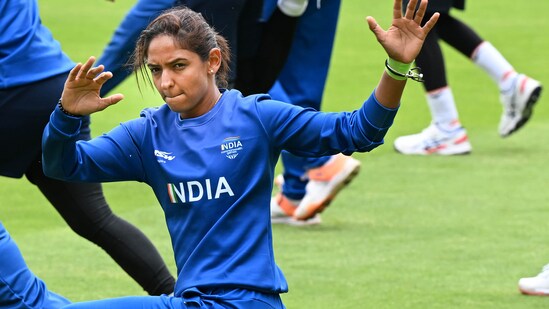CWG: Against Australia, India seek more than just a winning start
In the 2018 T20 World Cup in the Caribbean, the Indian women's cricket team beat Australia in their group game. Australia went on to win the tournament. In the 2020 T20 World Cup in Australia, India shocked Australia in the tournament opener, putting the hosts within one loss of crashing out of the tournament. Australia went on to win the tournament, beating India in the Final in front of a crowd of 86,174.  PREMIUM
PREMIUM
This is the pattern India will try to break, this is the generational trauma India will try to resolve when they begin their Commonwealth Games campaign against Australia on Friday. If Roger Federer is the best player in the World, and Rafael Nadal is the best player against Federer, then apply that analogy to Australia and India. Australia, reigning champions in the ODI and T20I format, are undoubtedly the team to beat. And while they will never admit it, the team they don't like to face is India, a team with more match winners than actual matches won.
Central to India's last defeat of Australia, at Sydney Olympic Park, was a slow pitch and an even slower bowler. Poonam Yadav took four wickets in that game, but her stocks have since declined in both formats. (4 wickets in 71 overs in ODIs since 2021, and played only 4 T20Is in that period). Now for the first time since her debut, India find themselves going into a major tournament without a leg spinner in the squad. Add to that, Pooja Vastrakar and Sabbineni Meghana did not travel with the Indian team to Birmingham. Although there has been no official update from the BCCI, it is believed that they contracted Covid-19 before departure, and it is not clear whether they will be available for the first game. This makes all-rounder Sneh Rana’s return to the squad, after being rested in the last series, welcome news.
India trained at Edgbaston on Wednesday, doing fielding drills in different sections of the ground, in order to get a feel of a venue where they will be playing for the first time. However, no amount of fielding practice in empty stadiums will prepare them for the atmosphere of a packed Edgbaston on Sunday, when India are scheduled to take on Pakistan in a match that is close to selling out Edgbaston’s capacity of more than 27000. The stakes of that game will ride on India’s results in the opener. India’s final group game will be against Barbados, with two teams from each group of four advancing to the medal round. The format means that a bad day at the office is something no team can afford, although the noises from the Indian camp were all about winning irrespective of circumstances.
“You have to believe that you can pull off the match from any situation. That’s very important,” said wicketkeeper Yastika Bhatia, speaking on the sidelines of training. “From whatever situation, we have to help the team win. Even when the chips are down, we need to be able to win from there. And even when we’re doing well, even if we’re having a good run rate, we need to improve that. Even when we’re doing well, we need to remember that mindset about how we can do even better.”
Bhatia’s role will be in focus this tournament. She has played only five T20Is but has been preferred as 'keeper to the powerful Richa Ghosh, who has lost her spot not only with the gloves but also in the squad after meagre returns in the last three months (19 runs in three innings on India's tour to Sri Lanka). Bhatia also bats left-handed, giving India three left-handed batters in the top seven, alongside Smriti Mandhana and Deepti Sharma, giving her an edge in a format that is more match-up driven than any other. (The left-handed advantage is one shared by Australia, who have four left-handed batters in their squad of 15.)
India’s net sessions gave every indication that the team is expecting those matchups. Shefali Verma spent quite a bit of time preparing for the short ball, something that teams have used against her before. Mandhana batted in the nets against off-spin, and all the batters spent time outside the nets working on their range hitting. Harmanpreet Kaur could be seen with a golf club in hand, practising her swing, working on her hip and shoulder separation. It seemed to do the trick: Harmanpreet was particularly fluent in the nets, whether while hitting along the ground or in the air. She was India’s standout performer on the tour to Sri Lanka, claiming player of the series awards in both formats. Her knock in the final ODI, rescuing India from 124 for six with 75 off 88 balls, ensured India swept the ODIs. Keep an extra eye on her, come Friday. It is a game against Australia, after all.
Experience unrestricted digital access with HT Premium
Explore amazing offers on HT + Economist Start 14 Days Free Trial Already Subscribed? Sign In
Disclaimer: The copyright of this article belongs to the original author. Reposting this article is solely for the purpose of information dissemination and does not constitute any investment advice. If there is any infringement, please contact us immediately. We will make corrections or deletions as necessary. Thank you.







